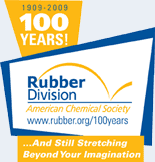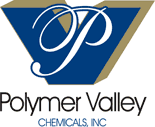![[ Visit ACS Rubber Website ]](images/logo.jpg) |
|
Centennial Elite SponsorsBecome a Centennial Elite Sponsor |
10 APPLICATION OF LOW FIELD 1H DOUBLE-QUANTUM NMR EXPERIMENTS TO THE STUDY OF NATURAL RUBBERTuesday, October 13, 2009: 9:45 AM
329 (David L. Lawrence Convention Center )
Natural rubber is an important and unique material with many practical applications because their elastic properties. Rubber long-range elasticity depends on the cross-link network structure formed during the vulcanization process. For this reason, its study allows us to reach a better understanding of the correlation between the microstructure and the macroscopic properties of the natural rubber. Although it is quite difficult to obtain very local information on actual cross-link density from this complex system, solid-state NMR spectroscopy is an attractive and powerful tool to study both, structure and dynamics of natural rubber. Proton double-quantum (DQ) or, more generally, multiple-quantum (MQ) NMR, is the most recent and versatile approach towards the measurement of weak residual dipolar couplings, which is the NMR observable. It provides in the same experiment not only quantitative information on semi-local chain order (thus cross-link density) and its distribution, but also about chain dynamics and non-elastic network defects.
In this work, DQ NMR experiments were carried out in an inexpensive and easy-to-use low field spectrometer (~20 MHz) to study NR samples vulcanized with different cure systems: conventional, efficient and organic peroxides. Experiments show that vulcanization processes via radical pathways (peroxides) create heterogeneous networks (even with some evidence of bimodality), along with a higher content of non-network defects (loops or dangling chains), and different polymer dynamics. These micro-structural factors could be the reason of the well known differences in the macroscopic properties of natural rubber according to the vulcanization system. |









